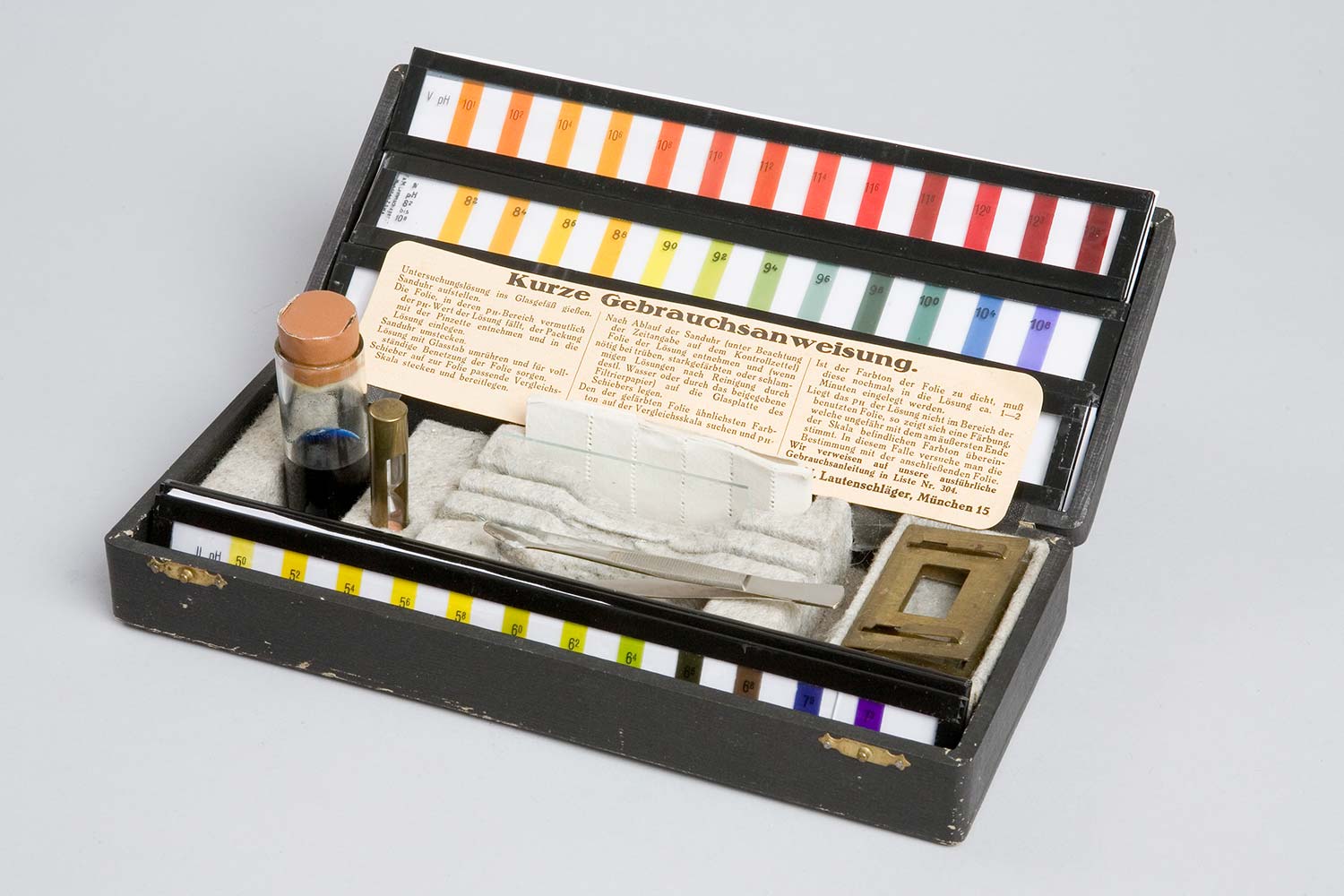10Color test kit for determining the pH value
1900

This small case contains a color test kit from the Munich company F. & M. Lautenschläger from 1900, which uses color indicators to determine the pH value of substances. This value indicates the concentration of hydrogen ions and measures how acidic or basic a liquid is. The lower the concentration of hydrogen ions in the solution, the higher the value. The pH scale runs from zero to 14. Solutions with a pH of seven are neutral; those below are acidic, and those above seven are basic or alkaline.
pH values are very important for biomedical investigations; they directly influence a wide range of biochemical and cell-physiological processes. The results of an experiment carried out in an aqueous environment can only be interpreted correctly if the pH at which the experiments were carried out is known. This can be calculated when the concentration and strength of the acids and bases in a solution are known. However, such calculations do not provide exact values, only approximate ones. To precisely determine pH values, test kits such as the one shown here were used starting in the early twentieth century. The method is based on the discovery that so-called indicator dyes change their color under different pH values. These include litmus, which is red at pH values below 4.5 and turns blue above 8.3. The phrase “litmus test“ even found its way into common parlance. The disadvantage of individual indicators is that they are specific to particular pH levels and thus only cover a narrow range of measurements. The test kit presented here therefore contains a mixture of indicators which, used together, cover the entire pH scale. Such mixtures of indicator dyes are called universal indicators. To measure the pH value, the indicators are added to a sample of the measuring solution and their subsequent color is compared with the corresponding color scale to determine various pH values.
The ability to determine pH values quickly and easily is a basic procedure for modern biomedical research. The instruction manual for this test kit shows that using it could be quite complicated. Color test kits are therefore no longer used in modern laboratories. They are not precise enough for most uses today.
Around 1930, Fritz Haber developed glass electrodes that are still used in modern pH meters. These permit establishing pH values to a precision of two decimal places. An early example of such devices is the pH meter and its measuring electrode, from Clamann & Granert, Dresden, also on display here, from 1966. This device is much easier to use than the test kit. The glass electrode is immersed in a calibration liquid whose pH value is known, then in the liquid to be tested, and the pH value can be read directly on the device. Modern pH meters also work according to this principle.